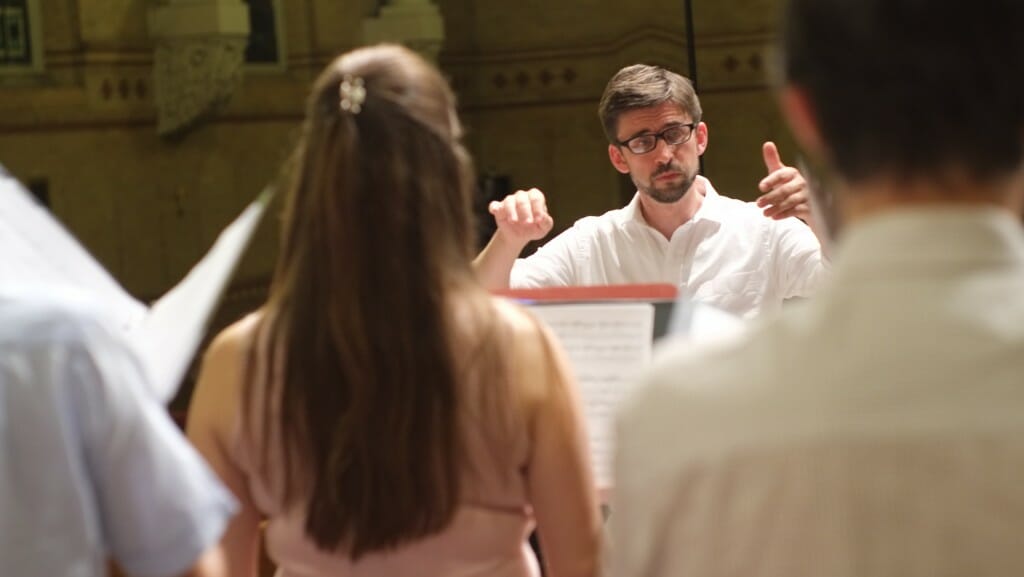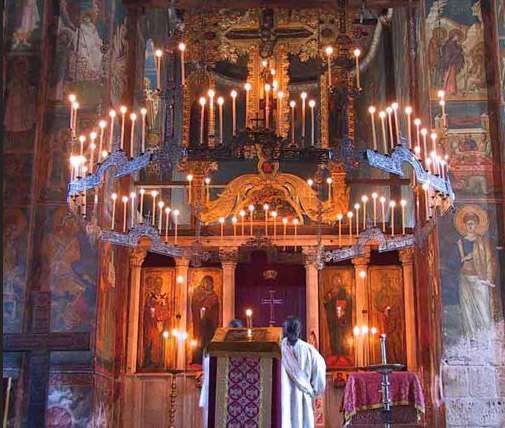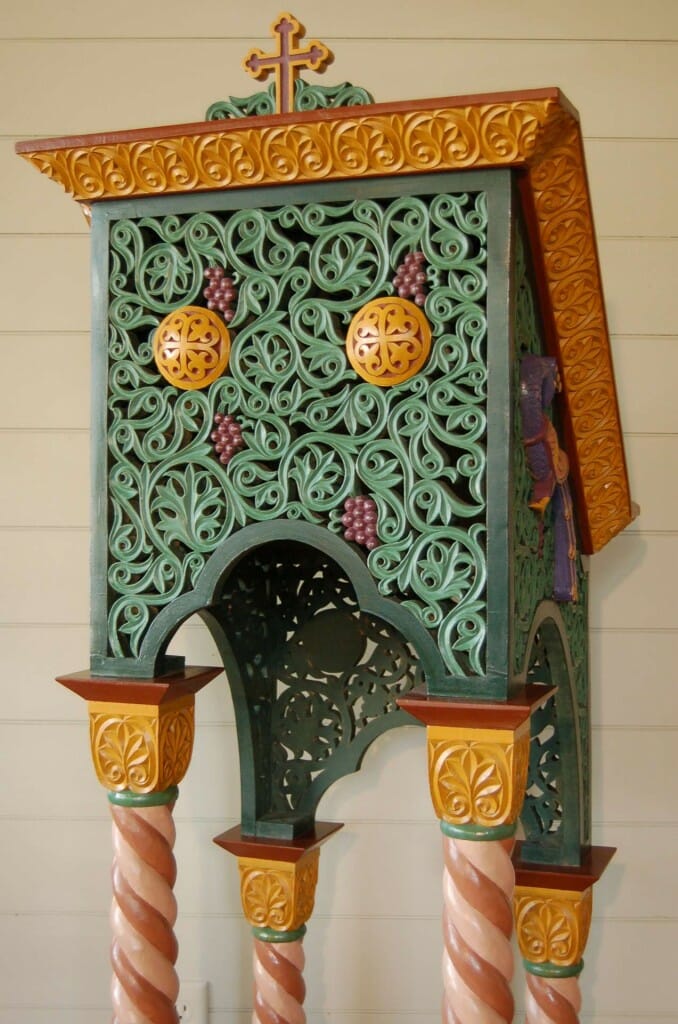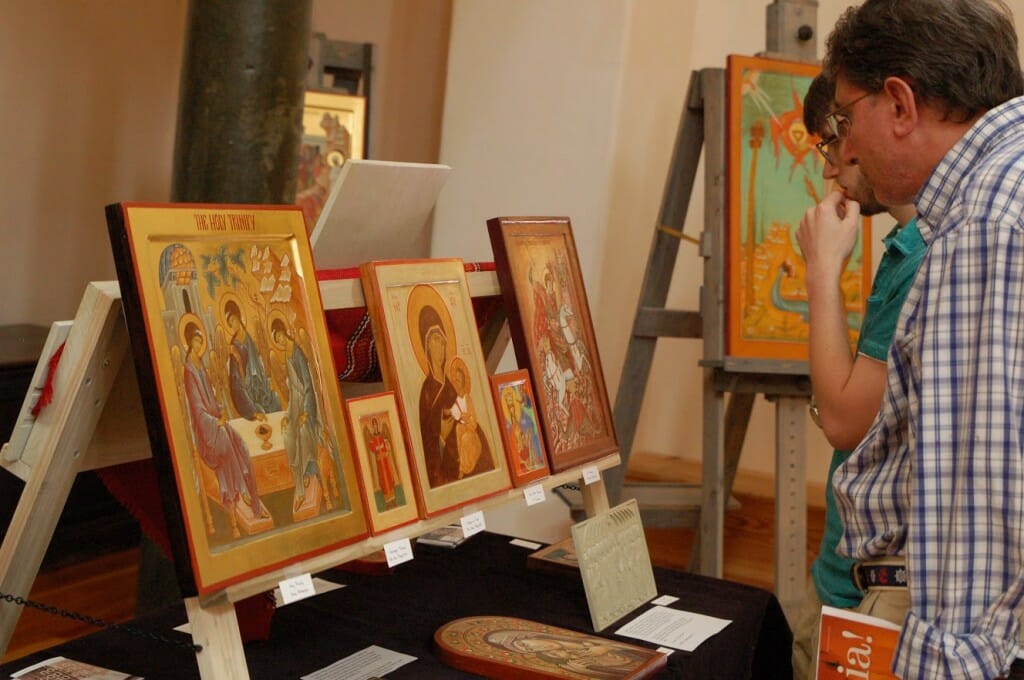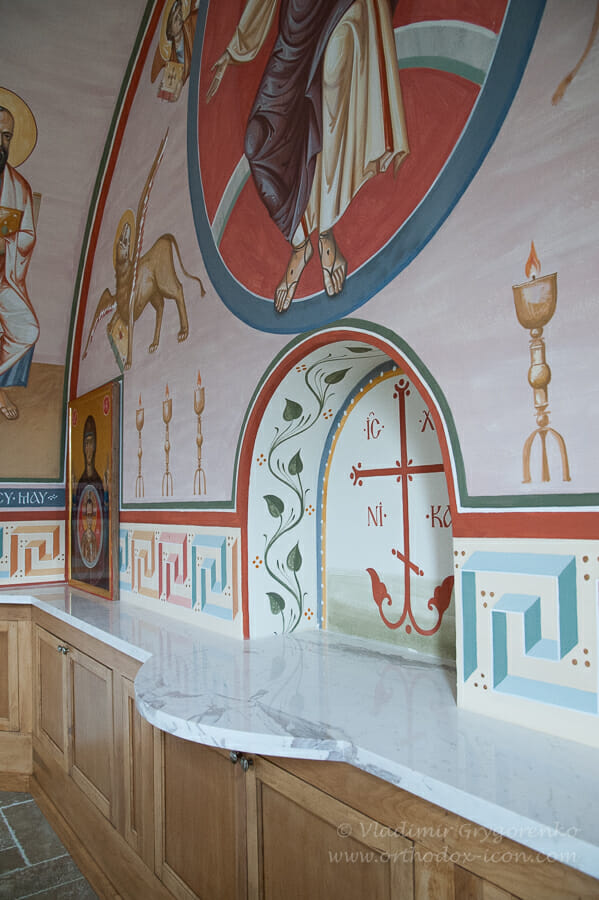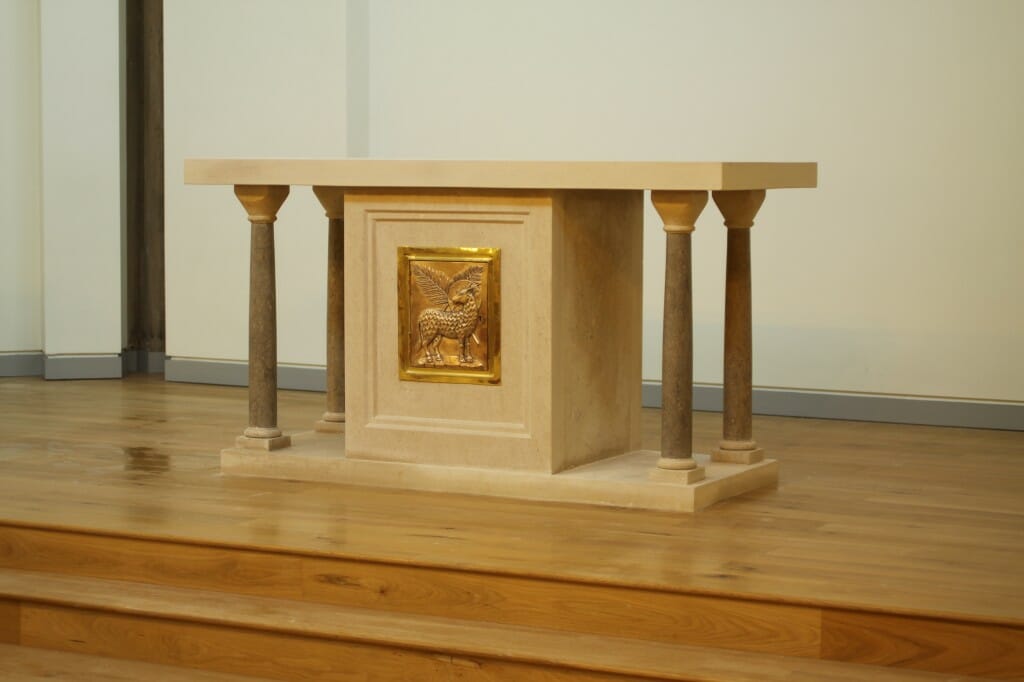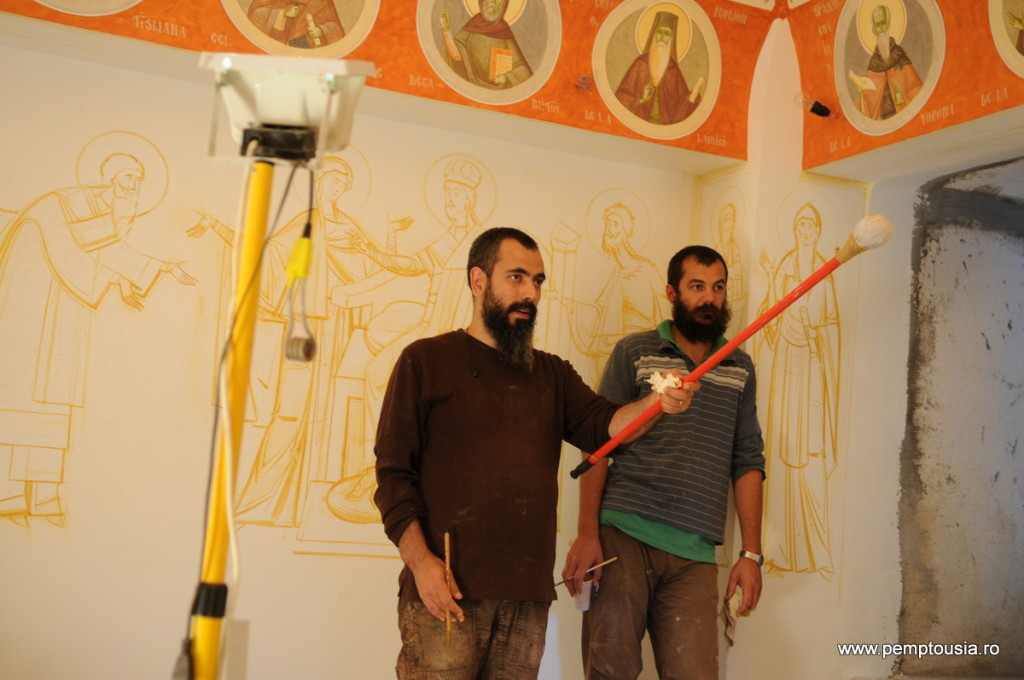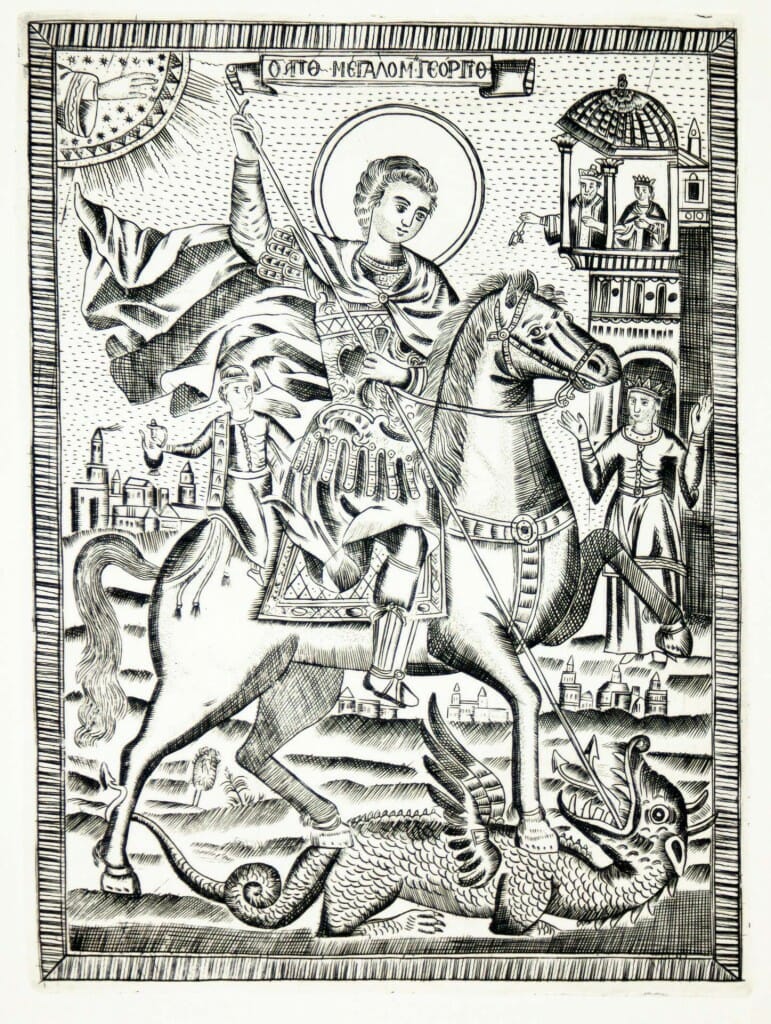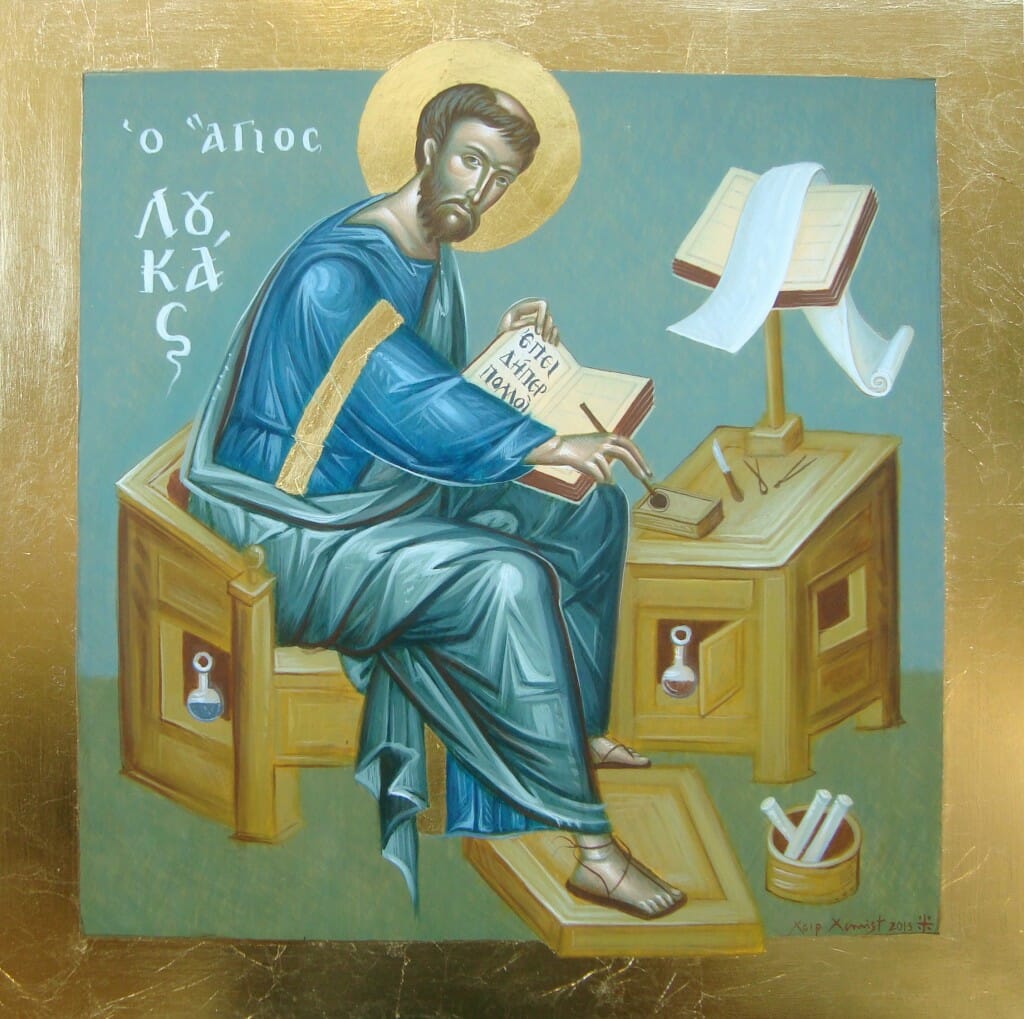Posts Tagged ‘Orthodox’
The State of Church Singing in America: An Interview with Choirmaster Benedict Sheehan
Editor’s Note: This interview appeared originally on pravoslavie.ru, with questions posed by Jesse Dominick. Benedict Sheehan is a composer, conductor, arranger, writer about, and teacher of, music. He currently plies his trade at St. Tikhon’s Orthodox Theological Seminary and Monastery, where, since 2010, he has taught Orthodox liturgical music and directed the choirs. Benedict is also a regular…
Continue reading »Lighting in Orthodox Churches: Liturgical Principles and Practical Ideas
What are we aiming to achieve when we choose lighting for an Orthodox church? We need a certain amount of light to see, but lighting also creates an ambience, helps to create an inner state. So what ambience are we seeking to create in our churches? These and other questions face parishes and monasteries when…
Continue reading »The Question of Polychrome – Part 2: Painting a Byzantine Analogion
This is post 2 of 2 in the series “The Question of Polychrome for Liturgical Woodcarving” Andrew Gould looks at the role polychromy has played in historical liturgical arts and how it can be adapted to contemporary designs. The Question of Polychrome for Liturgical Woodcarving – Part 1 The Question of Polychrome – Part 2:…
Continue reading »The Question of Polychrome for Liturgical Woodcarving – Part 1
This is post 1 of 2 in the series “The Question of Polychrome for Liturgical Woodcarving” Andrew Gould looks at the role polychromy has played in historical liturgical arts and how it can be adapted to contemporary designs. The Question of Polychrome for Liturgical Woodcarving – Part 1 The Question of Polychrome – Part 2:…
Continue reading »‘Living Tradition’ Symposium in Charleston, SC – Videos Online
On May 23rd, iconographers Philip Davydov and Fr. Silouan Justiniano spoke at a symposium titled “Living Tradition: Painting Sacred Icons in the 21st Century”. The event was the first of its kind organized by the Orthodox Arts Journal. It was held at Holy Ascension Orthodox Church in Charleston, SC. The event focused on the question…
Continue reading »The Archbishop Dmitri Memorial Chapel – An Interview with Iconographer Vladimir Grygorenko
The Archbishop Dmitri Memorial Chapel is an ongoing project at St. Seraphim Cathedral in Dallas, Texas. It is especially interesting as it is a chapel designed to honor the earthly remains of the locally venerated archbishop. We are pleased to offer this interview with master iconographer Vladimir Grygorenko, who designed and painted the chapel. A.…
Continue reading »Holy Tables with Reliquaries, a Short History
In this overview and the one that will follow I have combined the history of altars (also called holy tables), ciboria and tabernacles because their respective developments are somewhat related. In this first section I will deal with Holy Tables and will focus on ciboria and tabernacles in the second installment. My interest in…
Continue reading »The New Romanian Masters: Innovative Iconography in the Matrix of Tradition
(Editor’s note. For some time now we’ve wanted to find a way to present the burgeoning iconography which is currently happening in Romania. And so after a bit of searching, this article introducing the new school of iconography was written especially for OAJ by Mother Atanasia (Văetişi) of the Stavropoleos Monastery in Bucharest in collaboration with my own parish priest Fr.…
Continue reading »The Printmaking Tradition on Mount Athos
Editor’s note: We would like to introduce our new contributor, Markos Kampanis. Markos is a prominent artist and iconographer in Greece. He has a particular expertise in Athonite murals and prints and will be sharing his knowledge in a series of articles. Artistic tradition on Mt Athos is usually associated with painted icons and murals.…
Continue reading »An Interview with Iconographer Federico José Xamist
Federico José Xamist is a remarkably talented young iconographer of whom we have recently become aware. His work exemplifies icon painting as a fresh and living tradition. We offer the following interview to introduce this exciting artist to our readers: Gould: Federico, you grew up in Chile. How did you come to live in Greece? J. Xamist: When I…
Continue reading »
